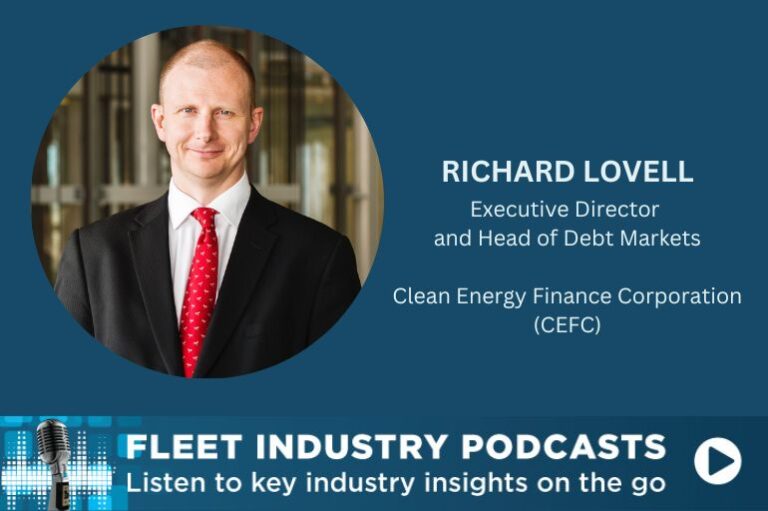Fleet News Group podcast host Caroline Falls talks with Richard Lovell, executive director and head of debt markets at the Clean Energy Finance Corporation, about the Federal Government-backed green bank’s investments to accelerate decarbonisation of the transport sector, including electrifying fleets.
“There’s a few recent developments, that have been very conducive to the transport sector, on its pathway for decarbonisation. The first and most obvious is that at the passenger and light commercial end of that spectrum, we are seeing increased vehicle availability through a number of manufacturers bringing greater numbers of electric vehicles to Australia, the number of types of models as well as the number of actual cars has been increasing. And that’s really important because for fleets in particular, it’s critical that vehicles are suitable,” said Lovell.
He said he expects this diversity of available EV models in Australia to accelerate as manufacturers start to step up their ambitions to transition their own manufacturing in line with set targets.
Similarly, an expansion of vehicle charging options and networks is stimulating fleet electrification, said Lovell, adding it was a more complex part of the puzzle.
“Charging infrastructure is quite a challenge, because it is difficult to undertake classic investment that sees charging infrastructure as a typical infrastructure asset which replace steady cash flows over the life of its use in order to repay the capital costs and generate a profit. That’s really hard with charging infrastructure for a whole bunch of reasons.
“But we have seen a lot of players like state governments, like motoring organisations, and a number of the private sector players recognise the opportunity that charging infrastructure can bring and so we expect to see even greater focus on that in the course of the next 12 to 24 months.”
Lovell said it was widely recognised that a national charging network was crucial to overcome range anxiety even though long-distance travel, particularly in passenger and light vehicles, may be infrequent. He talked about state governments in particular investing heavily in public charging facilities — including those in NSW, Qld, and SA.
Lovell also explored a point he made at the Institute of Public Works Engineering Australasia fleet conference in March — that the lack of good data to forecast residual values for electric vehicles was a barrier for fleets wanting to transition.
“Historically, over a long period of time, residual values of vehicles within fleets has been one of the key factors that drive the total cost of ownership.
“The challenge with electric vehicles is that because so few of them have made it onto the road so far, an even smaller number of them have ever actually been sold in the second-hand market. And so, therefore, there’s a lot more uncertainty simply because there are far fewer data points.”
This makes it difficult for both fleets and for fleet financiers to price operating leases and similar products.
“That uncertainty in residual value creates an additional cost which has to be paid for through the useful life of the vehicle. So if you don’t know whether an electric vehicle is going to be worth 10 percent of its original value, or 50 percent of its original value, at the end of the lease, you have to cover that uncertainty through the lease payments. And that just means that operating an electric vehicle is more costly than would be the case for an ICE vehicle.”
Falls and Lovell also talk about bus fleet electrification, hurdles for the heavy vehicle sector to overcome, the positive impact from the fringe benefit tax discount, and at home and public charging options.
On the subject of right sizing, Lovell said while the CEFC was an investor and not in the business of de fleeting, reducing a fleet was an important consideration when trying to satisfy ESG (environmental, social, governance) targets because about half of the emissions of a traditional internal combustion engined vehicle are tied to their manufacture.
“Therefore, if a car is not being used efficiently, then it’s arguably the case that those embodied emissions in the vehicle themselves are functionally wasted.
“Everything costs money. And so you’ve got to try and get value out of the fleet that you have, the fact that you save on the embodied emissions is another positive. And even, you know, zero tailpipe emission vehicles create a level of emissions through the charging.
“It’s a logical thing we think to do; to try and consider the right sizing of the fleet rather than have underutilised vehicles.”







